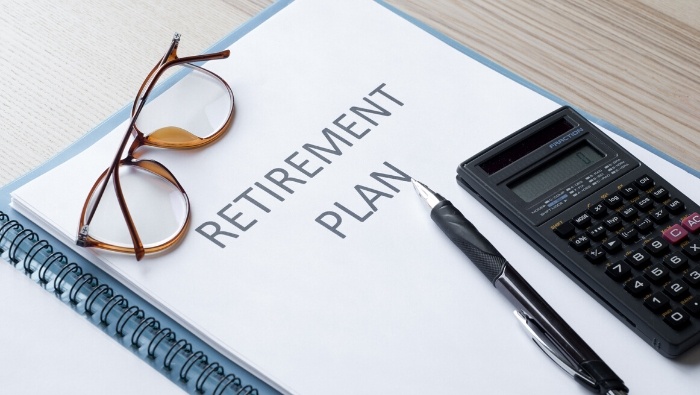How a Distribution Plan Can Maximize Retirement Plan Assets
by Gary Foreman

You worked hard to save the money. Don’t you want to get the most out of it? Find out how having a distribution plan can help stretch your retirement assets.
You’ve spent your entire working life building your retirement accounts. Now as you’re about to retire, it’s time to begin thinking about how to distribute the funds in your retirement accounts.
What does the law require? What about taxes? Does it make a difference which retirement account you withdraw from first?
With 10,000 people reaching retirement age every day, it’s an important question. And according to the latest available number from the U.S. Census Bureau, “56.1% of people ages 40 to 55 (a portion of Generation Xers) and 58.1% of people ages 56 to 64 (a portion of baby boomers) have retirement accounts.” Having a plan for distributing your retirement assets can significantly affect how far those retirement accounts go.
We asked John C. Neyland, President of JCN Financial & Tax Planning Group in Baton Rouge, Louisiana to help us understand how a retirement distribution strategy can maximize income.
Q: Most people spend their working lives accumulating assets in their retirement plans without giving a thought to how they’ll access them in retirement. When should someone start giving thought to a distribution strategy?
Mr. Neyland: There are two parts to funding your retirement. The accumulation phase first and then the distribution phase second.
One should develop a plan as they are saving their first dollar (accumulation phase). Part of this plan is to look forward to determining income needs, taxation both now and later, health care, and distribution order.
You deserve a comfortable retirement.
Q: What is it about the various retirement plans that make it better to distribute one before another?
Mr. Neyland: There are essentially two types of retirement accounts, namely taxable and tax-free.
Tax-free money is not necessarily better. If you are in a low tax bracket, tax-free may not be significant.
If, however, one finds themselves with excess RMD (required minimum distribution) at 73, tax-free accounts may be an essential means to reduce taxes.
Q: Is there a way to estimate how much difference a planned retirement distribution strategy can make in a retiree’s income?
Mr. Neyland: I have found one of the more remarkable comparisons is to compare two cases that are exactly the same and run two different case studies.
I call it “good logic” vs “bad logic.” This is due to the fact that investment rates of return, taxes, income needs, etc., are all the same. The only difference is that in “bad logic,” assets are liquidated most inefficiently.
For example, the highest earners are sold first for income and lower earners are sold second. In many cases, this is the largest difference maker, even more than tax reduction strategies. I have done an analysis that shows my client having a large amount left at the end of retirement when using “good logic.” Then I invert the distribution order and the client does not have enough to fund their retirement.
Q: Could different investments held in different plans affect which ones should be sold to provide funds for distribution?
Mr. Neyland: Certainly as aforementioned, the order of distribution may, at times, be the difference between having enough and not having enough.
If one doesn’t consider tax efficiency in their planning, they may come to realize this was a mistake.
Q: Are there any calculators or apps that can help calculate the difference between distribution strategies? Or is professional help needed?
Mr. Neyland: This is a very sophisticated analysis. Additionally, one needs to understand various software and its uses.
I would not recommend a do-it-yourself approach, as mistakes can sometimes be very costly and not repairable.
Q: What’s the most common mistake people make when they distribute their retirement plans?
Mr. Neyland: In my practice, I have seen what appears to be an industry-wide case of oversight in regard to distribution order.
Consider a farmer with two mules. If he must butcher one for food, should he butcher the bigger, larger mule or the smaller one? Think about it. The larger mule will plow more farm and benefit the farmer more.
Now consider your money. You have a bond that earns 4% and a stock with a long-term growth of 8%. Would you rather keep the bond at 4% or the stock at 8% in your pocket? Certainly keeping the 8% stock in your pocket will serve you better.
Reviewed November 2023
About the Expert
John C. Neyland, an Investment Advisor Representative, is President of JCN Financial & Tax Planning Group, LLC in Baton Rouge, Louisiana. As an Ed Slott CPA Master Elite Advisor, John specializes in retirement planning with a high concentration on tax-efficient distribution strategies. As a professional in estate planning and financial services, John provides a comprehensive financial analysis and customized financial plan designed to help meet the unique needs of each his clients.
About the Author
Gary Foreman is the former owner and editor of the After50Finances.com website and newsletter. He's been featured in MSN Money, Yahoo Finance, Fox Business, The Nightly Business Report, US News Money, Credit.com and CreditCards.com.
Sign me up for a comfortable retirement!
Sign me up for a comfortable retirement!
Popular Articles
- Comparing Retirement Housing Options
- How We Retired With Almost No Savings
- How Retirees Can Live on a Tight Budget
- 9 Things You Need to Do Before You Retire
- What You Need to Know About Long Term Care Insurance Before You Retire
- You Didn’t Save Enough for Retirement and You’re 55+
- Could Debt Derail Your Retirement? A Checklist
- Your Emergency Fund In Retirement: A Comprehensive Guide
- Managing Your 401k In Your 50s

